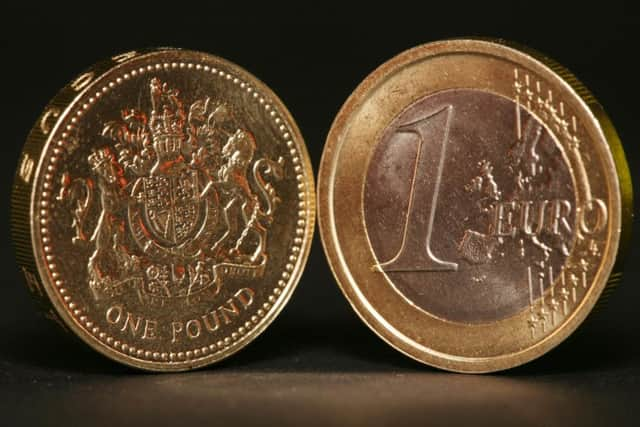Funding, farmers and volatility


This has been very positive for our grain producers, collecting an enhanced single farm payment and also enjoying a £20 to £25/tonne uplift in grain prices purely driven by exchange rates.
For our livestock sector however there is a sting in the tail - with well over two million tonnes of feed materials to be imported from Europe, South America and the USA - we will suffer from the rapidly falling exchange rate against euro and dollar. The 15% reduction in the value of sterling will add £75 million to the province’s annual feed bill when the full effect has filtered through.
Advertisement
Hide AdAdvertisement
Hide AdOur local European issues are only part of the story of course – in the wider world, markets are moving in response to the normal trade issues of supply and demand, weather patterns and money movements. The concerns about the La Nina weather pattern causing dryness in Argentina is creating some doubts on the supply side and funds looking for somewhere to invest their $millions have moved back into agri commodities. Funds reportedly moved from a position of 50 million tonnes short in grains to 25 million tonne short over a three-week period.
The buying spree spilled over into the soya markets and in spite of strong supply signals the markets responded with soya meal in Chicago moving from under $295 per tonne to $328 in a few days. Most of this gain has been given up again and the markets settled back in recent days as the funds became sellers – offloading substantial tonnages of corn and soya.
Volatility is a big feature and markets are sensitive to money movements but fundamentally not much has changed with little activity in terms of physical trade. Generally prices have come off the bottom reached in mid-October with all commodities trading a little stronger and buyers are struggling to find where the value is. Sterling buyers have the added concern about currency and where the current slide will end.
It is inevitable that currency driven inflation will affect most farm inputs and indeed the wider economy. This cost pressure makes it critical that product prices quickly reflect the increased value of our exported milk and meat. After a prolonged period of food deflation it is important that food retailers recognise the pressures in their supply chain and deliver more realistic farm prices.
Advertisement
Hide AdAdvertisement
Hide AdCurrent prices are not at a sustainable level and as farmer indebtedness to the banks has just crossed the 1 £billion level and with trade credit also running at record levels there are many businesses at breaking point.